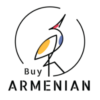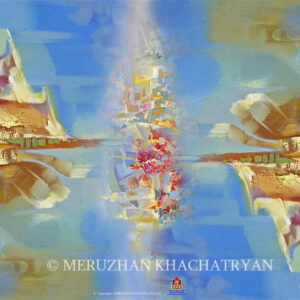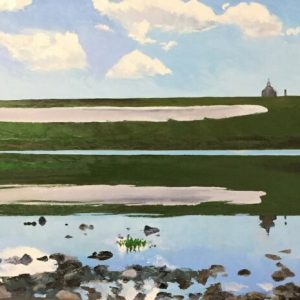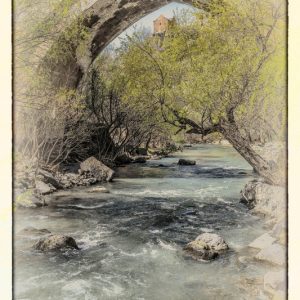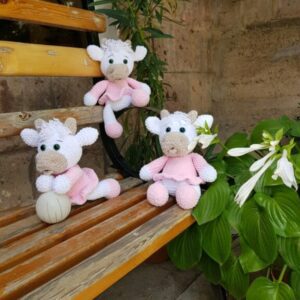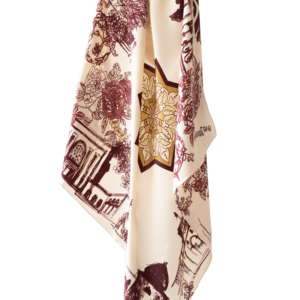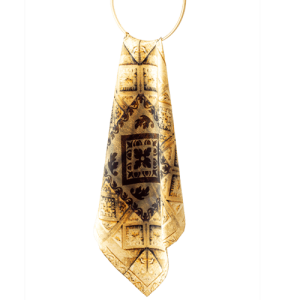-
“Flight” Silk Scarf
Silk, chiffon and cashmere scarves from the GANDZ studio.
Design of each one is based on one of the original painting of Meruzhan Khachatryan.
This original Armenian scarf idea is based on an abstract painting by the same name of Meruzhan Khachatryan”
Brand
GANDZ Armenian Art
Designer
Meruzhan Khachatryan
Material
70% silk 30% polyester
Size / Dimensions
+ – 17.7” x 70.8” (45 x 180 cm)
Made in
Armenia
$55.00 -
“On The Top Of Armaghan Mountain”
Size: 37x80cm
This is an oil painted canvas panel painted with palette knife. For my paintings, I use only high-quality paints and canvases.
The painting is an original one with one example only.
It is a good piece of art for decorating living rooms, reading rooms etc.$300.00 -
Cigar Maduro Especial
5 x 60 – Box of 27
Exceptionally well-crafted, Maduro Especial by Garo™ provides the flavor experience the maduro smoker most craves
$350.00Cigar Maduro Especial
$350.00 -
The old bridge. Photo print.
The old bridge. Photo print on canvas or photopaper.
$30.00 – $200.00The old bridge. Photo print.
$30.00 – $200.00 -
“Garni Temple”
Work of artist Ben Poghosyan, severely wounded hero of the 2020 Artsakh 44-Day war.
Size: 22x29cm
Material: Wood, oil paint
$480.00“Garni Temple”
$480.00 -
Stars Cuff Silver Earrings
STAR CUFF EARRINGS LEFT RIGHT IN 925 SILVER WITH BLACK SPINNEL STONES AND WHITE SWAROVSKI: {AND IN NEED WE CAN PREPARE WITH 14K&18 GOLD}
$40.00Stars Cuff Silver Earrings
$40.00 -
-
-
“Yerevan Love” Scarf
Inspired by the city of Yerevan and the love each and every Armenian feels for the city.
The history of Yerevan dates back to the 8th century BCE, with the founding of the fortress of Erebuni in 782 BCE by King Argishti I at the western extreme of the Ararat plain. Erebuni was “designed as a great administrative and religious centre, a fully royal capital.” By the late ancient Armenian Kingdom, new capital cities were established and Yerevan declined in importance. Under Iranian and Russian rule, it was the center of the Erivan Khanate from 1736 to 1828 and the Erivan Governorate from 1850 to 1917, respectively. After World War I, Yerevan became the capital of the First Republic of Armenia as thousands of survivors of the Armenian genocide in the Ottoman Empire arrived in the area. The city expanded rapidly during the 20th century as Armenia became part of the Soviet Union. In a few decades, Yerevan was transformed from a provincial town within the Russian Empire to Armenia’s principal cultural, artistic, and industrial center, as well as becoming the seat of national government.
With the growth of the Armenian economy, Yerevan has undergone major transformation. Much construction has been done throughout the city since the early 2000s, and retail outlets such as restaurants, shops, and street cafés, which were rare during Soviet times, have multiplied. As of 2011, the population of Yerevan was 1,060,138, just over 35% of Armenia’s total population. According to the official estimate of 2016, the current population of the city is 1,073,700. Yerevan was named the 2012 World Book Capital by UNESCO.[28] Yerevan is an associate member of Eurocities.$110.00 -
-
-
“Garni” Silk Scarf
Available 2 sizes: 60 x 60 cm and 90 x 90 cm / 100% Silk
The Temple of Garni is the only standing Greco-Roman colonnaded building in Armenia and the former Soviet Union. Built in the Ionic order, it is located in the village of Garni, in central Armenia. It is the best-known structure and symbol of pre-Christian Armenia.
The structure was probably built by king Tiridates I in the first century AD as a temple to the sun god Mihr. After Armenia’s conversion to Christianity in the early fourth century, it was converted into a royal summer house of Khosrovidukht, the sister of Tiridates III. According to some scholars it was not a temple but a tomb and thus survived the destruction of pagan structures. It collapsed in a 1679 earthquake. Renewed interest in the 19th century led to excavations at the site in early and mid-20th century, and its eventual reconstruction between 1969 and 1975, using the anastylosis method. It is one of the main tourist attractions in Armenia and the central shrine of Hetanism
$47.00 – $79.90
